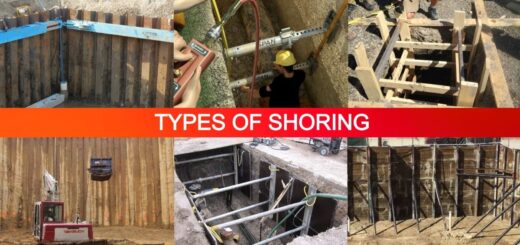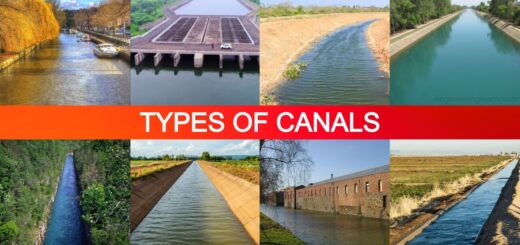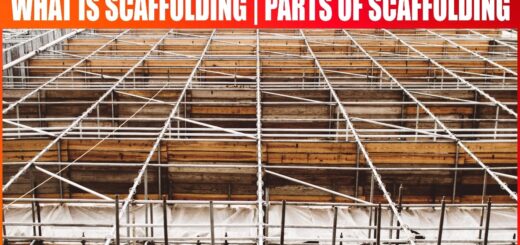11 Types of Retaining Walls – Material, Functions, Applications, Advantages & Disadvantages [Complete Details]
![11 Types of Retaining Walls - Material, Functions, Applications, Advantages & Disadvantages [Complete Details]](https://engineeringlearn.com/wp-content/uploads/2023/01/Retaining-Walls-1024x539.jpg)
Introduction
Types of Retaining Walls – Material, Functions, Applications, Advantages & Disadvantages [Complete Details]: – The retaining walls could be a significant reasonable structure in innovation. The main reason for the wall is to retain earth or different material at or near the vertical position. This type of wall is widely utilized in a spread of things like course, rail route, extension, and water system designing, land recovery and beach front designing, and so on. Concrete holding walls have a vertical or inclined stem strong monolithically with a base block. These are considered proper up to a height of 6m.
What is a Retaining Wall?
A retaining wall could be a structure utilized for keeping up with the base surfaces at very different elevations on one or the other aspect of it. It offers lateral support to vertical slopes of soil. They keep the soil that could somehow collapse into an additional structure. The preserved soil is raised as a backfill. It must be intended to carry the soil back, if not, it will tip over or overturn. There are numerous varieties of materials, which will be wont to produce holding walls like concrete blocks, poured concrete, treated lumbers, rocks, or stones. Some are direct to utilize, others have a more limited age, and be that as it may, all will retain soil.
What kind of Materials are Used for Retaining Walls?
There are different materials used to construct retaining walls like concrete blocks, concrete, treated timber, rocks, or stones.
The material held or supported by a retaining wall is known as a backfill, its top surface might be inclined or horizontal. The position of the backfill over the horizontal plane at the wall top is called surcharge and its tendency to the horizontal is called surcharge angle.
Below is the list of materials used for retaining walls:-
- Wood sheets
- Steel and plastic interlocking sheet
- Reinforced concrete sheets
- Precast concrete parts (lodging walls and block walls)
- Closely dispersed unaltered soil-cement heaps
- Wire-mesh boxes (gabions)
Functions of Retaining Walls
- This wall holds the soil or other material from shifting in circumstances where the elevation changes suddenly.
- Earth retaining structures are utilized to hold back the earth and keep up with the difference in the ground surface height.
- Other externally exerted loads are securely transmitted to a foundation by holding or retaining structures designed to endure the soils or backfill.
Types of Retaining Walls
Retaining walls are complete walls that act as landscape elements or components. Others are components of the foundation of a building, a road, or a bridge. They’re typically made of solid areas set up of concrete, masonry block walls, or significant wood. The types of retaining walls are as per the following:
1. Gravity Retaining Wall: ( Types of Retaining Walls )
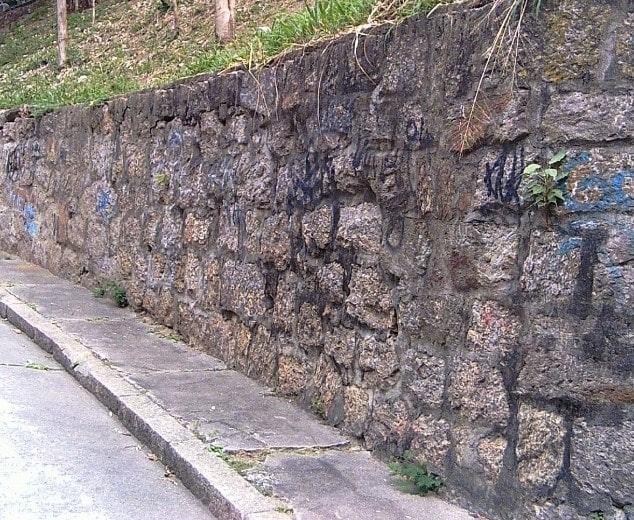
Gravity walls infer their parallel stability by their mass. Gravity retaining walls are designed and intended to resist earth pressure by their weight. They are constructed of mass cement, brick, or stone masonry. Since these materials can’t resist obvious pressure, the design aims to forestalling tension in the wall.
Some Important Points Related to Gravity Retaining Wall
- Gravity retaining wall relies upon its self-weight just to oppose lateral earth pressure.
- Generally, a gravity retaining wall is massive on the grounds that it requires a significant gravity load to counteract soil pressure.
- Sliding, overturning, and bearing forces will be thought about while this type of retaining wall structure is designed.
- It very well may be constructed from various materials like concrete, stone, and masonry units.
2. Cantilever Retaining Wall: ( Types of Retaining Walls )
Exactly when the height of a cantilever retaining wall is more than around 7 m, it is proficient to provide an upward bracing structure, known as counterforts, on the backfill side over the heel slab.
Some Important Points Related to the Cantilever Retaining Wall
- Cantilever retaining wall composed of stem and base section.
- It is constructed from reinforced concrete, precast cement, or prestressed concrete.
- Cantilever retaining wall is the most widely recognized type utilized as retaining walls.
- Cantilever retaining wall is either constructed on-site or pre-assembled offsite for example precast.
- The portion of the base section underneath the backfill material is termed as a heel, and the other part is called the toe.
- It requires the more modest quantity of concrete contrast with gravity wall however its design and construction will be executed cautiously.
3. Gabion Retaining Wall: ( Types of Retaining Walls )
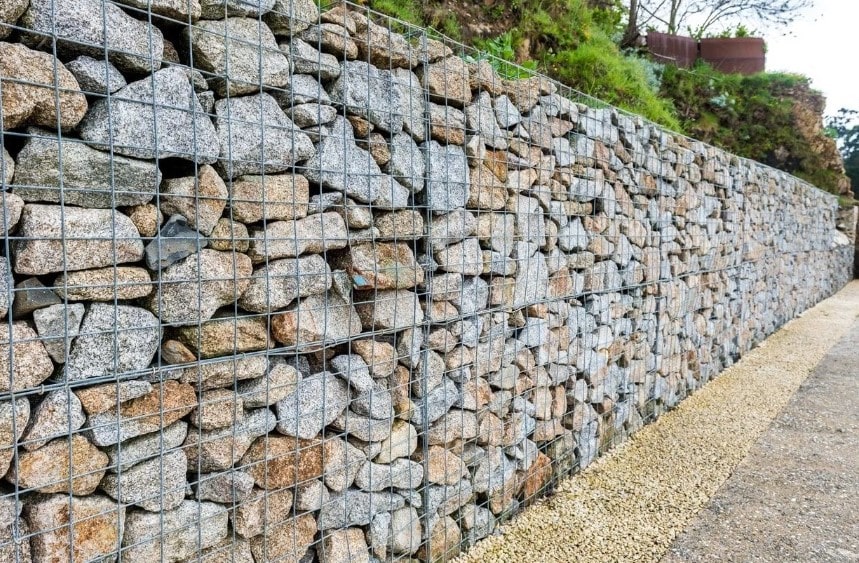
Gabion retaining wall frameworks is one of the most established types of gravity walls. Gabion walls are manufactured by an industrial facility fabricating a stirred hexagonal wire mesh of differing widths into box cages.
Some Important Points Related to Gabon Retaining Wall
- Gabion retaining wall walls are multi-celled, rectangular wire network boxes, which are loaded up with rocks or other suitable materials.
- It is used for the construction and development of erosion control structures.
- Balancing out steep slopes is likewise utilized.
- They can oblige substantial ground movements without any failures.
- Gabion boxes are free-draining structures that can decrease hydrostatic pressure drastically.
4. Crib Retaining Wall: ( Types of Retaining Walls )
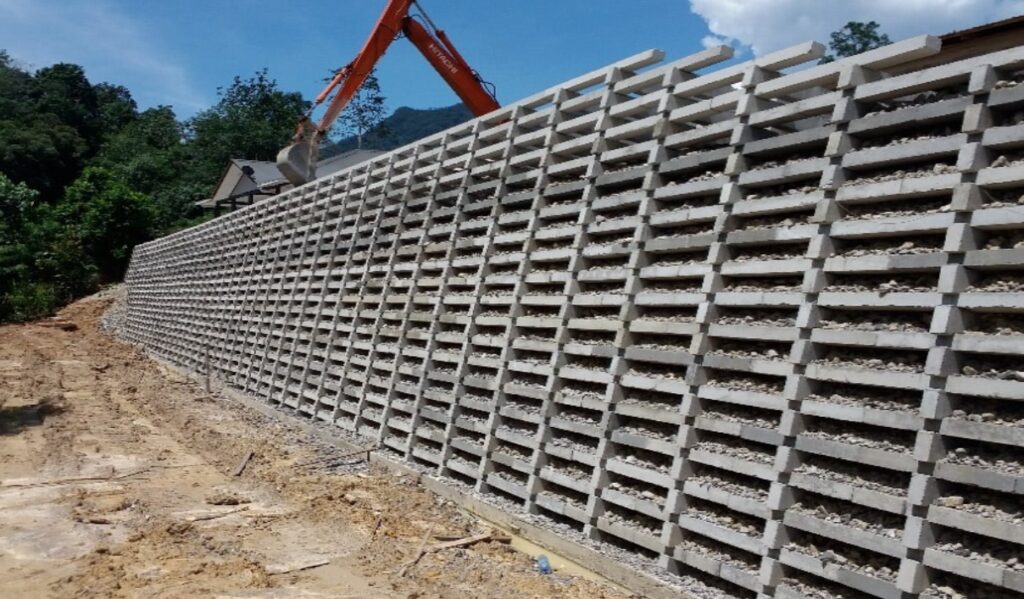
A crib retaining wall or crib lock retaining wall is one of the most established types of retaining wall. They comprise cribs or cells made of timber, cement, and plastic/filaments. The cribs or interlock areas are filled with free-draining materials or earth back-fill, disposing of the hydro-static pressure and enabling a free escape of water.
Some Important Points Related to Crib Retaining Wall
- They are constructed of interlocking individual boxes made using timber or pre-cast concrete.
- Then, the boxes are loaded up with crushed stone or other coarse granular materials to create a free draining structure.
- Basic types of crib retaining walls incorporate reinforced precast, and timber retaining walls.
- It is suited to support planter regions, however, it isn’t recommended for support of slopes or structures.
5. Anchored Retaining Wall: ( Types of Retaining Walls )
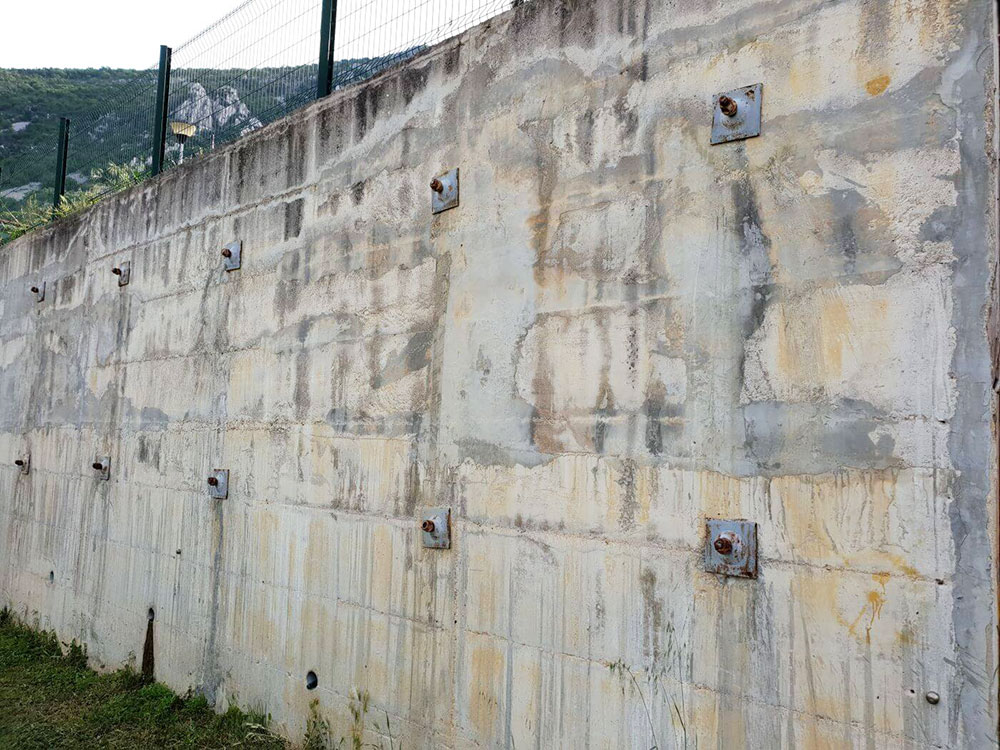
This type of retaining wall system is a structural element incorporated into a rock or soil formation to transfer the tensile forces on the structure to the ground. Anchored retaining wall frameworks are otherwise called a tie-back system, It is comprised of cables, anchors, and thin walls.
Some Important Points Related to Anchored Retaining Wall
- This sort of retaining wall is employed when the space is restricted or a thin retaining wall is required.
- Anchored retaining wall is reasonable for loose soil over rocks.
- Significantly high retaining walls can be constructed utilizing this kind of retaining wall structure system.
- Deep cable rods or wires are driven deep sideways into the earth, then the closures are filled up with cement to provide an anchor.
6. Piled Retaining Wall: ( Types of Retaining Walls )
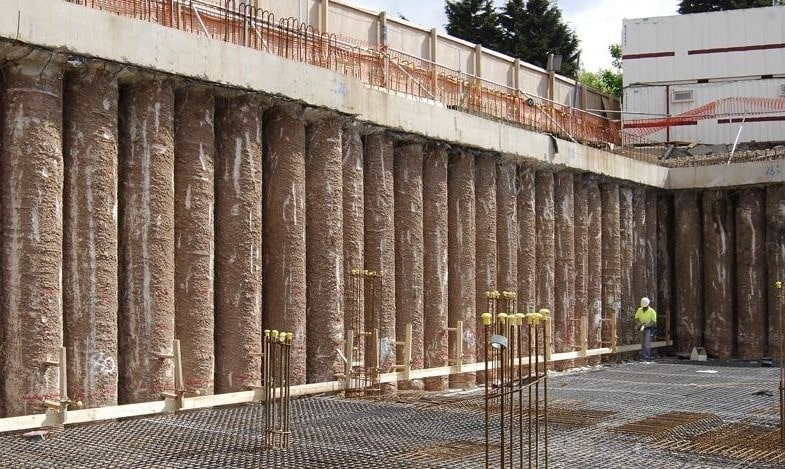
The pile retaining wall is widely utilized in the construction industry because of its accessibility and ease of construction. It is utilized as long-lasting or temporary structures to safeguard the adjoining structures. It evades lateral movement of the soil around a foundation structure, particularly in weak soil conditions.
Some Important Points Related to Pile Retaining Wall
- Piles are constrained into a depth that is adequate to counter the force which tries to push over the wall.
- It is utilized in both temporary and permanent works.
- Piled walls offer high stiffness retaining elements that are able to hold lateral pressure in large excavation depths with almost no aggravation to surrounding structures or properties.
- Sheet pile walls are built utilizing steel sheets into a slope or excavations up to a required depth, however, it can’t endure exceptionally high pressure.
7. Counterfort / Buttressed Retaining Wall: ( Types of Retaining Walls )
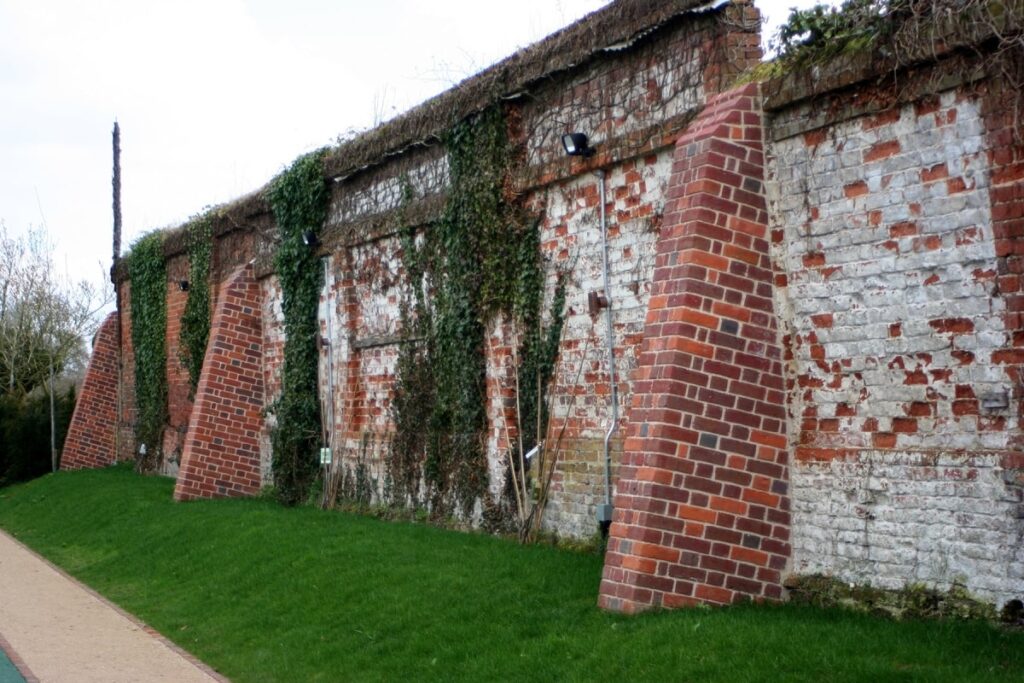
Exactly when the three-sided beams are put on the front side of the retaining wall, as opposed to on the backfill side under specific conditions, the retaining wall is known as buttressed retaining wall, and the three-sided beams are known as buttressed, rather than counter forts.
Important Points Related to The Buttressed Retaining Wall
- It is utilized as permanent or temporary structures to safeguard the adjoining structures.
- It evades lateral movement of the soil around a foundation structure, particularly in weak soil conditions.
- It is a cantilever retaining wall however strengthened with counter forts monolithic with the rear of the wall slab and base section.
- Counterfort spacing is equivalent to or somewhat larger than half of the counter-fort height.
8. Mechanically Stabilized Earth Retaining Wall: ( Types of Retaining Walls )
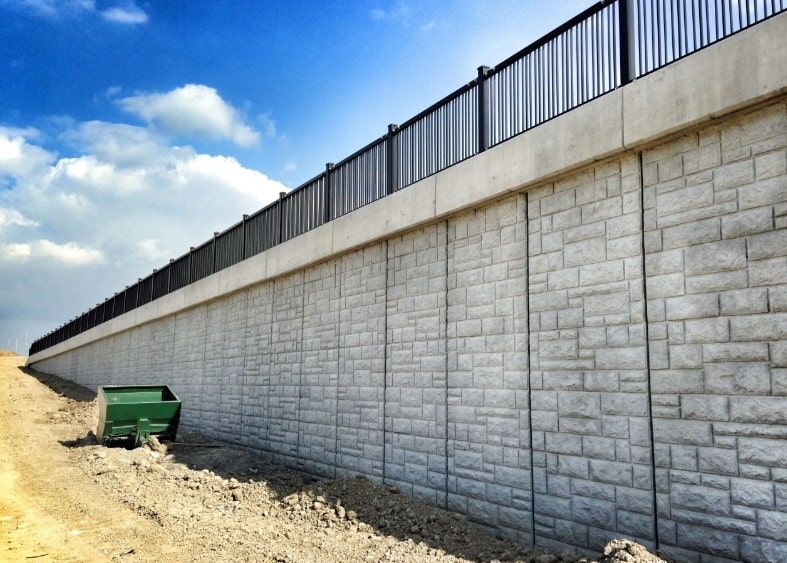
In a typically MSE wall, compacted granular soil is reinforced by horizontal layers of steel strips or geosynthetic materials. The utilization of reinforced elements significantly increases the strength of the framework. Facing elements are moderately thin components, usually made out of pre-cast concrete, welded wire mesh panels, or shotcrete. Their primary goal is to hold the soil between the reinforcement layers.
Some Important Points Related to MSE Retaining Wall
- It is among the most affordable and most commonly constructed retaining walls.
- Mechanically stabilized earth retaining wall is supported by selected fills and kept intact by reinforcements, which can be either metallic strips or plastic meshes.
- Different types of MSE retaining walls include panel, concrete block, and temporary earth retaining walls.
9. Diaphragm Retaining Wall: ( Types of Retaining Walls )
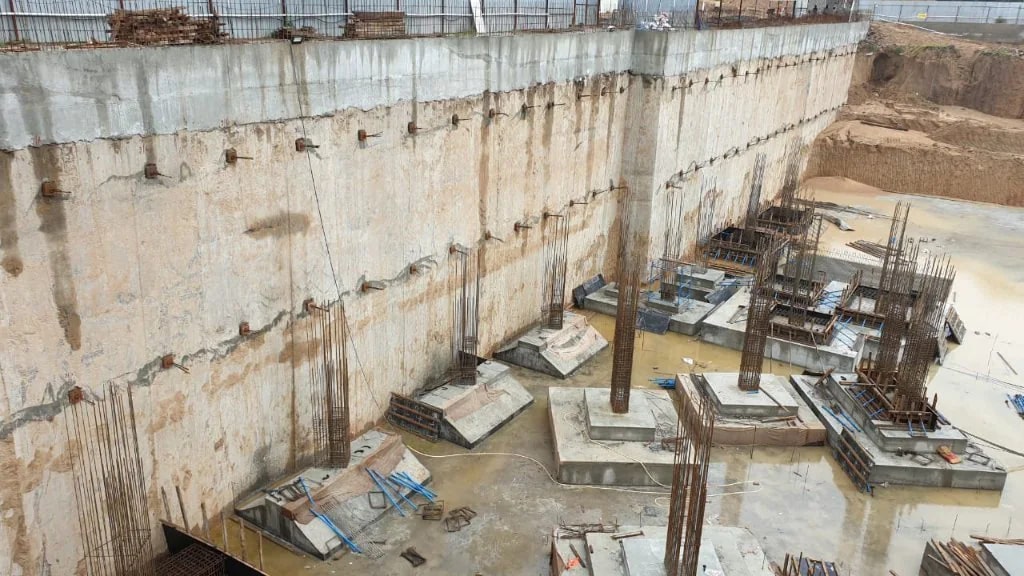
A diaphragm wall is a continuous reinforced concrete wall constructed in the ground to support significant construction activities like the construction of dams, tunnel approaches, deep basements, and enclosures.
Some Important Points Related to Diaphragm Retaining Wall
- They act as a retaining wall, support for the underground structure, as a foundation, or work with cut-off provision to support deep excavation.
- Diaphragm walls can be of a reinforced concrete wall or sheet heap or pile wall.
- It incorporates a vertical concrete reinforced concrete slab fixed in position.
- Wall is held firmly in position by the passive and dynamic pressures following up on its lower segment.
10. Reinforced Earth Retaining Wall: ( Types of Retaining Walls )
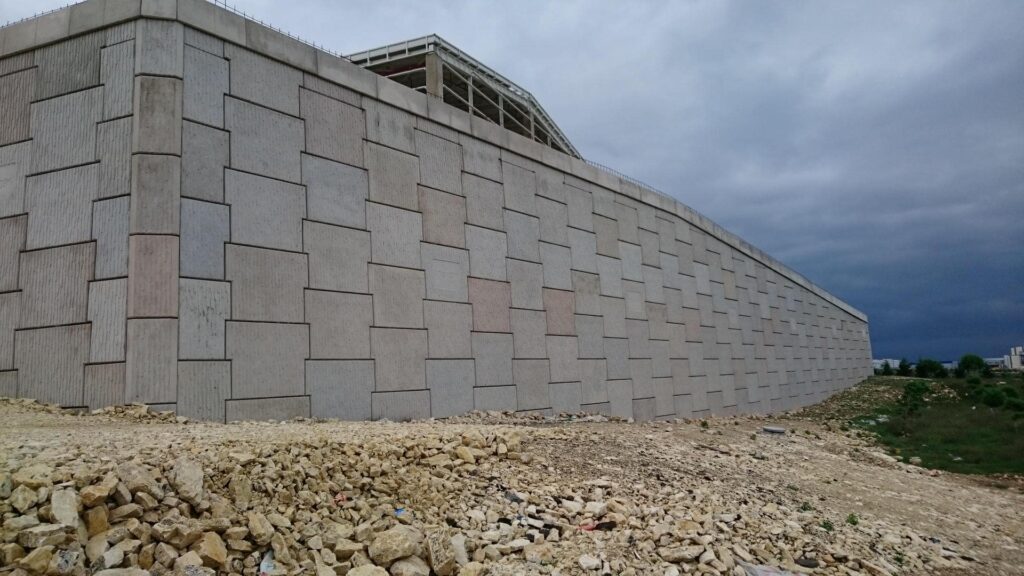
In this retaining wall, the utilization of reinforcement to strengthen the soil has been known for quite a long time. In the past straws are utilized to strengthen unburnt bricks and fascine sleeping cushions have been utilized to strengthen soft soil deposits prior to road construction.
The primary peculiarity working in reinforced earth walls is that a mass of soil can be given tensile strength in a particular direction if the lengths of a material equipped for carrying tension are embedded within the required direction.
11. Hybrid Retaining Wall: ( Types of Retaining Walls )

Retaining walls that utilize both mass and reinforcement for steadiness are termed Hybrid or Composite retaining wall systems. Hybrid systems retaining walls are comprised of a lower soil nail wall (SNW) and a mechanically stabilized earth wall (MSEW) to support lateral or horizontal loads.
Applications of Retaining Walls
The following is the rundown of different applications of Retaining wall
- Construction of basements below ground level in buildings.
- In the bridge, work comprises the wing walls and projection.
- To maintain slopes in hilly areas.
- As side walls of bridge approach roads.
- Providing lateral support to the embankment.
Difference Between a Sheet Pile and a Retaining Wall
A customary RCC retaining wall gets its support basically from the weight of the wall as well as from the weight of the soil retained over the heel slab. The depth of the foundation is generally small, and the passive resistance of the soil is normally neglected in the design. On account of sheet files, lateral support is principally derived from the passive resistance of the soil underneath the dredge level. Subsequently, the depth of the foundation is large contrasted and that of a retaining wall. The thickness of sheet piles is very small contrasted with the depth and length of a wall. Thus, the weight of a sheet pile is very small and is typically disregarded in the design.
Advantages of a Retaining Wall
- You can build your building by constructing a retaining wall.
- At the point when your structure is placed in a slopping climate, retaining walls are intended to resist and combat side gravity.
- Retaining walls are a practical solution for keeping sinkholes from damaging your landscaping.
- Retaining walls are utilized to provide level surfaces on slopes and stabilize inclining landscapes.
- The Landscape region can be protected with a retaining wall. Accordingly, Maintenance can be limited over time.
- Retaining walls can add to the stylish value of your environment.
Disadvantages of Retaining Wall
- Because of extreme pressure or drastic temperature changes, certain retaining walls foster vertical crevices in the poured concrete.
- Some retaining walls, for example, brick walls, can’t endure severe soil pressure, bringing about brick breakage or failures of foundations.
- At the point when the wood is used as a retaining wall, termites might be drawn to your property.
Conclusion
A retaining wall settles or stabilizes the soil and shields the buildings from overturning and slipping, it likewise assists with saving construction costs. Retaining walls are fundamentally used to forestall soil erosion, make usable beds from the steep territory, and provide decorative or functional landscaping highlights. planning leeway or clearance is required in the event that the wall is over 1-meter high close to a road or pathway or more than 2-meters high somewhere else. Building guidelines may not be required for autonomous, freestanding retaining walls; nonetheless, all constructions should be structurally sound and all around kept up with.
Content Source: – theconstructor, civiltoday, engineeringcivil, duzzlag
Image Source: – durisol, east, terrafixgeo, structuralguide, volkergroundengineering, impressiveinteriordesign, cinlegroup, gardeningknowhow, wikipedia
